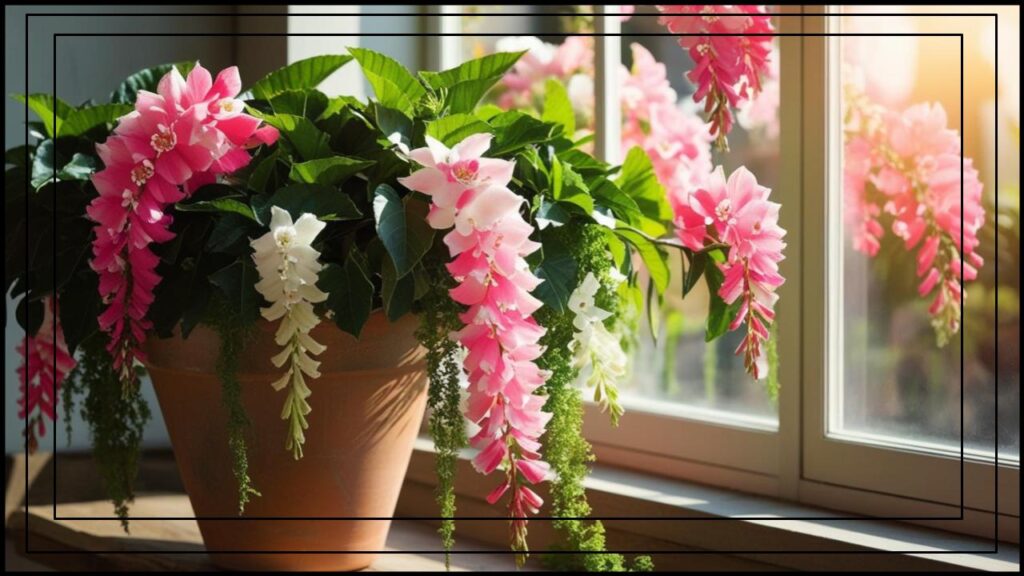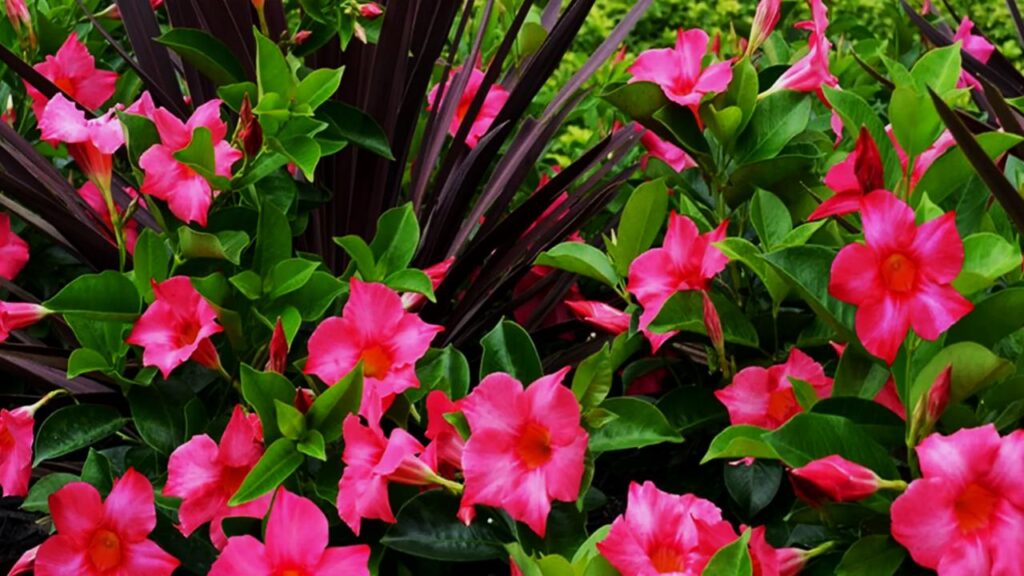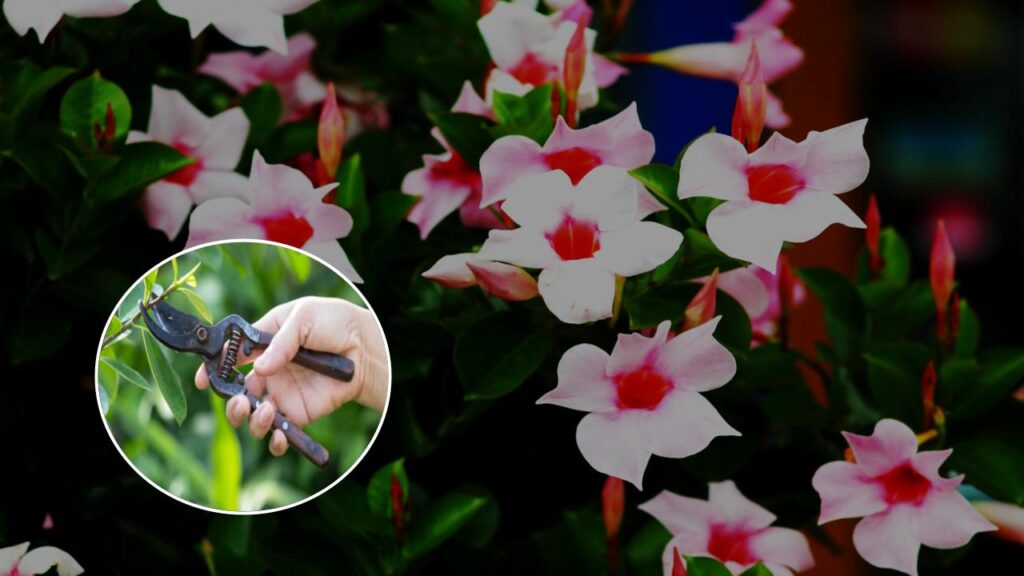Got a thing for lush, tropical blooms but stuck in a place where winter still bites? Don’t worry—we’re about to show you how to make your Dipladenia bloom like it’s soaking in a Florida summer, even if you live in a frosty zip code. Whether you’re gardening in the U.S., Canada, or India’s cooler hill stations like Dehradun, this guide is built for you.

What Is Dipladenia?
Dipladenia (aka Mandevilla) is a flowering vine or bush from South America, known for its show-stopping, trumpet-shaped blooms. With colors like crimson, pink, white, and even yellow, it’s a favorite for patios, balconies, and garden trellises. Unlike its vining cousin Mandevilla, Dipladenia tends to grow more compact and bushier, making it ideal for containers.
Where Can Dipladenia Grow?

Dipladenia thrives outdoors year-round in USDA Zones 9–11. That means places like Florida, Texas, southern California, and southern India. If you’re outside those zones, no stress! Grow it in containers and bring it indoors once the mercury drops below 50°F (10°C).
Sunlight: The #1 Bloom Booster
No sunshine = no flowers. Your Dipladenia needs at least 6 hours of full sunlight, preferably in the morning. In cooler or shadier zones, put it on a south-facing patio, balcony, or windowsill.
Grow Light Tip: If you’re growing indoors in the winter, supplement with LED grow lights to keep those buds coming.
Temperature Control
Keep it toasty but not steamy. Ideal:
- Daytime: 70–85°F (21–29°C)
- Nighttime: above 60°F (15°C)
If night temps drop below 50°F, move the plant indoors or into a greenhouse. Prolonged exposure to cold can kill blooms—or the whole plant.
How to Water Right
Water when the top 2 inches of soil feel dry. Don’t keep the soil soggy—it causes root rot. In winter, dial back on watering since the plant goes semi-dormant.
Tip: Always use well-draining soil and pots with drainage holes.
Feed Me, Seymour! (Fertilizing Tips)
For big-time blooms, feed your plant every two weeks during the growing season. Use a balanced liquid fertilizer (e.g., 10-10-10 or 20-20-20) or a bloom booster (e.g., 10-30-20).
Bonus tip: Add a teaspoon of Epsom salt (magnesium sulfate) once a month to help with flowering.
Pot vs Ground: Where Should You Plant?
| Feature | Container | Ground |
|---|---|---|
| Best For | Cold climates | Warm climates |
| Mobility | Easy to bring indoors | Not movable |
| Soil Control | Easy to manage drainage | Depends on native soil |
| Root Growth | Limited | Expansive |
| Verdict: If you’re not in USDA zone 9–11, stick with a container for better bloom control. |
Pruning = Blooming

To make Dipladenia bushier and bloom more:
- Pinch back new growth every 2–3 weeks
- Deadhead (remove spent flowers)
- Cut back hard in early spring to remove old growth
This helps the plant redirect energy to new flowers instead of old foliage.
Watch for These Pests
Dipladenia is usually pretty chill, but it’s still a magnet for:
| Pest | Signs | Fix |
|---|---|---|
| Aphids | Sticky leaves, tiny green bugs | Neem oil or hose blast |
| Spider mites | Webbing, yellow dots on leaves | Insecticidal soap |
| Mealybugs | White cottony spots | Rubbing alcohol + Q-tip |
| Inspect leaves weekly during the growing season. |
Propagation: Multiply Your Plants for Free
Want more Dipladenia without spending a dime? You can propagate via stem cuttings.
Here’s how:
- Snip a 4–6 inch stem below a leaf node.
- Remove lower leaves.
- Dip in rooting hormone (optional).
- Plant in moist, well-draining soil.
- Keep warm and humid until roots form.
Within 4–6 weeks, you’ll have a brand-new plant!
Companion Planting Ideas
Dipladenia pairs well with:
- Petunias – trailing habit + bright color
- Calibrachoa – similar water/light needs
- Sweet potato vine – great contrast
- Lantana – loves the sun, draws pollinators
Note: Don’t mix with thirsty plants like impatiens—they have different needs.
Seasonal Growth Timeline
| Season | What to Expect |
|---|---|
| Spring | New growth, first blooms, time to prune |
| Summer | Full bloom, feed every 2 weeks |
| Fall | Cut back watering, reduce feeding |
| Winter | Bring indoors, go semi-dormant |
Eco-Friendly Dipladenia Tips
- Use compost tea or banana peel water as organic fertilizer.
- Try neem oil or garlic spray for pest control.
- Reuse old containers, but sterilize first with vinegar solution.
Where to Buy Dipladenia (And What to Look For)
Look for reputable sellers like:
- Home Depot / Lowe’s (U.S.)
- Fernlea Flowers (Canada)
- NurseryLive or Ugaoo (India)
Choose plants with: - Shiny, dark green leaves
- Tight flower buds
- No visible pests or yellowing
